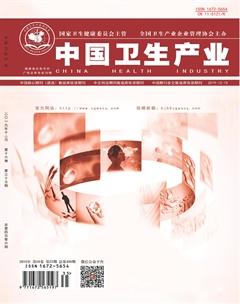社區延續性護理服務管理路徑對社區居民滿意度及家庭醫生簽約率的影響觀察
曹湘竹 李芬 李曉娜 馬亮
[摘要] 目的 探討對社區實行延續性護理服務管理路徑對社區居民滿意度及家庭醫生簽約率的實際影響效果。方法 選取2018年1月—2019年1月在該院進行就診的慢性病患者90例,按照隨機分組原則平均分為對照組和觀察組,對觀察組實行出院后社區延續性護理措施服務管理,對照組則給予該院常規治療護理措施,出院后不予特殊社區延續性護理治療,觀察記錄觀察組及對照組兩組患者居民滿意度及家庭醫生簽約率的結果并進行對比分析。結果 出院后實行社區延續性護理服務管理治療的觀察組患者后期恢復效果更佳,患者滿意度遠高于對照組,兩組實驗結果差異有統計學意義(P<0.05),同時觀察組家庭醫生簽約率更高。結論 社區延續性護理服務管理有助于提高出院患者院外護理,減少恢復期并發癥的發生,提高患者滿意度,有助于提高家庭醫生的推廣與臨床普及。
[關鍵詞] 社區延續性護理服務;居民滿意度;家庭醫生;影響
[中圖分類號] R47 [文獻標識碼] A [文章編號] 1672-5654(2019)12(b)-0051-03
Observation on the Influence of Community Continuing Nursing Service Management Path on Community Resident Satisfaction and Family Doctor Signing Rate
CAO Xiang-zhu1, LI Fen2, LI Xiao-na3, MA Liang4
1.Social Management Center, the Eighth Hospital Affiliated to Sun Yat-sen University, Shenzhen, Guangdong Province, 518000 China; 2.Hongshu Fuyuan Community Health Center, the 8th Hospital Affiliated to Sun Yat-sen University, Shenzhen, Guangdong Province, 518000 China; 3.Jinlong Community Health Center, the 8th Hospital Affiliated to Sun Yat-sen University, Shenzhen, Guangdong Province, 518000 China; 4.Qiaoxiang Community Health Center, the 8th Hospital Affiliated to Sun Yat-sen University, Shenzhen, Guangdong Province, 518000 China
[Abstract] Objective To explore the effect of the implementation of the continuous nursing service management path on community satisfaction and community doctors' signing rate. Methods Ninety patients with chronic diseases who were treated in the hospital from January 2018 to January 2019 were randomly divided into the control group and the observation group according to the principle of randomization. The observation group was administered post-discharge community care management services. The control group was given routine treatment and nursing measures in the hospital. After the hospital was discharged, no special community continuous nursing treatment was given. The results of the residents' satisfaction and the family doctor's signing rate were observed and compared in the observation group and the control group. Results The patients in the observation group who underwent community-based continuous care service management treatment after discharge were better, and the patient satisfaction was much higher than that of the control group. The difference between the two groups was statistically significant(P<0.05), and the family doctors in the observation group had higher signing rates. Conclusion Community continuity nursing service management can help improve the out-of-hospital care of discharged patients, reduce the incidence of complications during recovery, improve patient satisfaction, and help to promote the promotion and clinical popularization of family doctors.

